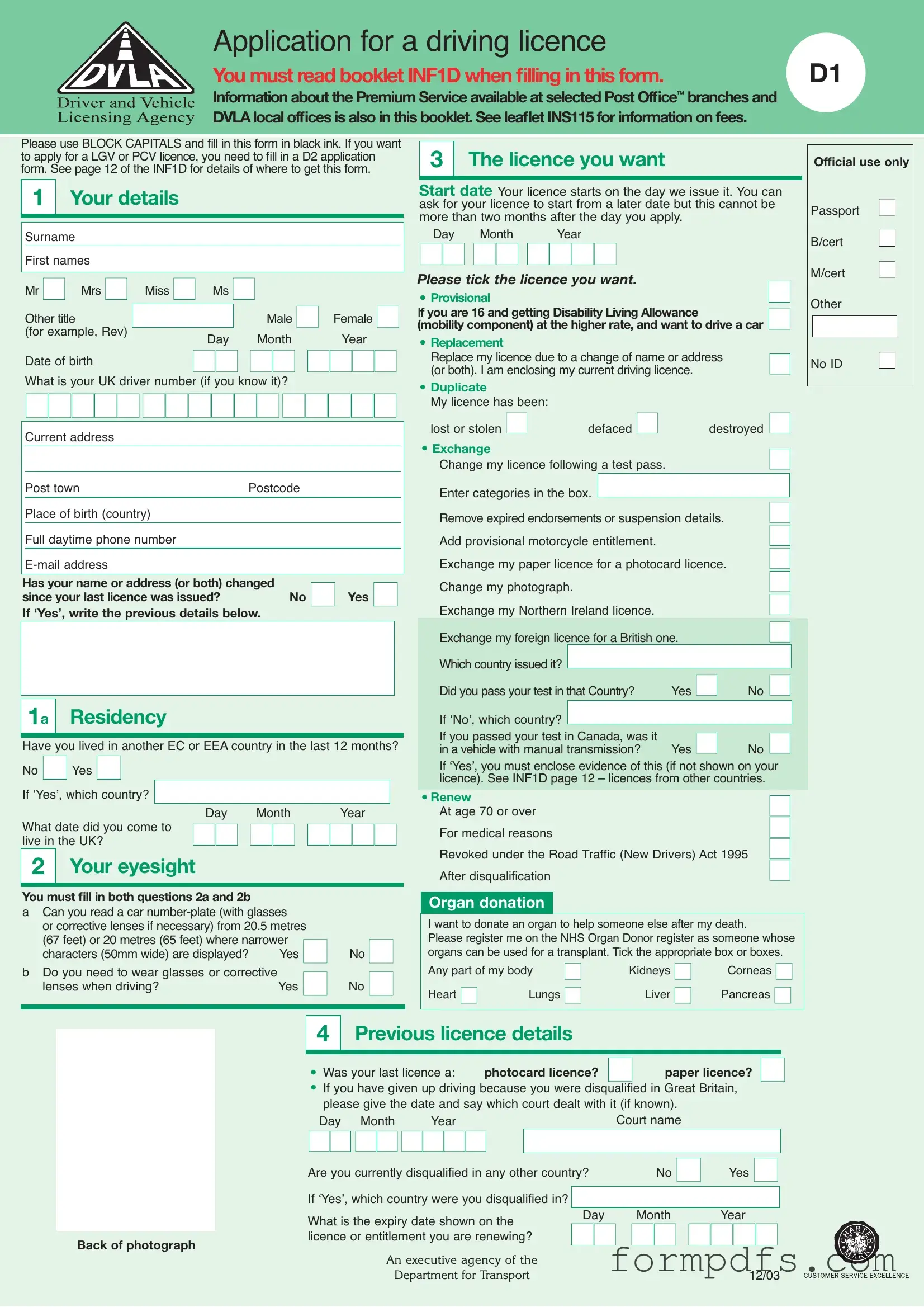What is the D1 DVLA form used for?
The D1 DVLA form is primarily used to apply for a driving licence in the United Kingdom. This includes applications for new licences, replacements due to name or address changes, and renewals. It is essential for individuals who wish to obtain or modify their driving permissions to complete this form accurately.
How do I fill out the D1 DVLA form?
When filling out the D1 DVLA form, use BLOCK CAPITALS and black ink. Ensure that you provide accurate personal details, including your name, address, date of birth, and contact information. You must also indicate whether you have lived in another European country in the past year and answer questions regarding your eyesight and health conditions that may affect your ability to drive.
What should I do if my name or address has changed?
If your name or address has changed since your last licence was issued, you must indicate this on the form. Provide your previous details in the designated section. It is important to ensure that all information is current and accurate to avoid any delays in processing your application.
What are the eyesight requirements for driving?
The D1 form requires you to confirm whether you can read a car number plate from a distance of 20.5 meters (67 feet) or 20 meters (65 feet) with or without corrective lenses. If you need glasses or corrective lenses to meet this requirement, you must indicate this on the form.
What types of driving licences can I apply for using the D1 form?
The D1 form allows you to apply for various types of driving licences, including provisional licences, replacements for lost or stolen licences, and renewals. You can also request changes such as adding motorcycle entitlements or exchanging foreign licences for a British one.
What health conditions do I need to disclose?
You must disclose any health conditions that could affect your fitness to drive. This includes conditions like epilepsy, diabetes, and severe visual impairments. If you have previously reported a medical condition, you should follow the instructions for confirming your current health status on the form.
What documents do I need to provide with my application?
To support your application, you must provide identity documents, such as a passport or birth certificate. If your name has changed, you will also need to submit documents that show the link between your current name and your previous name, such as a marriage certificate or a deed poll.
How long does it take to process the D1 DVLA form?
Processing times for the D1 DVLA form can vary. Typically, it takes about three weeks for applications to be processed. However, delays may occur, especially if additional information or documentation is required. It is advisable to apply well in advance of any planned driving needs.
What should I do if I make a mistake on the form?
If you make a mistake while filling out the D1 DVLA form, it is best to start over with a new form. Crossed-out information may lead to confusion and could delay your application. Ensure that all information is correct before submitting the form to avoid any issues.
